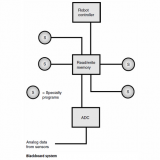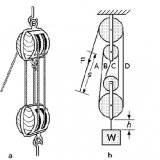PHOTOELECTRIC PROXIMITY SENSOR – 21103
Reflected light can provide a way for a robot to tell if it is approaching something. A photoelectric proximity sensor uses a modulated light-beam generator, a photodetector, a frequency-sensitive amplifier, and a microcomputer.
The light beam reflects from the object and is picked up by the photodetector.The light beam is modulated at a certain frequency, say 1000 Hz (hertz), and the detector has an amplifier that responds only to light modulated at that frequency. This prevents false imaging that might otherwise be caused by stray illumination such as lamps or sunlight. If the robot is approaching an object, the microcomputer senses that the reflected beam is getting stronger. The robot can then steer clear of the object.
This method of proximity sensing does not work for black or very dark objects, or for flat windows or mirrors approached at a sharp angle. These sorts of objects fool this system, because the light beam is not reflected back toward the photodetector.



